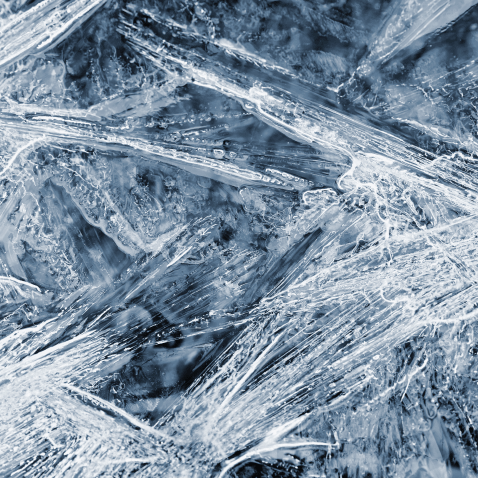End flue gas waste, start circularity.
Imagine a future where emissions aren't a waste, but a resource
We capture Greenhouse gas emissions and turn them into valuable products
96%
Capturing 96% of your flue gases (instead of 6% CO2)
3x
Capturing CO2, O2,N2 in 1 process splits energy & financial cost over 3 products
50%
Leading to a 50% lower capturing price









Technology
Process
01. Prepping
When produced, flue gas is hot and contaminated. The initial phase involves conditioning the flue gas, utilizing conventional methods such as cooling water to eliminate major pollutants and achieve the optimal starting temperature for the cryogenic process. This preparatory step ensures the machinery operates at peak efficiency.
02. Cooling
The flue gas mixture is pushed to cryogenic temperatures using cooling fluids and increased pressure, prompting phase changes in the gas mixture based on the unique properties of each gas. CO2, with its distinct freezing point, solidifies first. Our patented system efficiently isolates CO2 while allowing other gases to pass through unimpede.
03. Melting
When a cryogenic tank is full of frozen CO2, the incoming flue gas is redirected to another tank, allowing for constant carbon capture. This batch-operating system is a unique aspect of InAtmos' CO2 removal process. By applying specific pressure and temperature, CO2 turns into liquid.
04. Shipping
The CO2 leaves the machine in a liquid state, ready for efficient transport. This method enables delivery from factories without nearby gas pipelines, while conserving energy and additional costs for compression.
Turning emissions into opportunities
Collaborate with us to uncover the opportunities carbon capture offers, guiding you to make well-informed choices for a sustainable future.
Product
Benefits
There are more than 1300 heavy emitting sites in the EU that can benefit from our solution. Leverage our specialized knowledge to assess the potential of carbon capture technologies within your operations. We provide in-depth feasibility studies, customized to meet your specific requirements.
Significant CO2 reduction
Captures harmful CO2 emissions from industrial flue gases, leading to cleaner air and a healthier environment.
Lower carbon taxes
Reduces your carbon tax liability by effectively decreasing emissions, saving your business money.
Boost sustainability
Enhance sustainability practices, which can positively impact your company's reputation and stock prices.
Transform waste into value
Convert waste streams into valuable industry-grade products, creating new revenue streams and reducing waste.
Company
Why Choose InAtmos?
World class development and built for performance, will deliver to the highest standard, every time.

Carbon Capture
InAtmos is a carbon capture technology provider that captures the flue gases and turns it into valuable products by means of cryogenic installation.

N2 and O2 Capture
We optionally capture N2 and O2 gases, post-CO2 capture, by leveraging air separation and cryogenic technologies to effectively isolate N and O2 gases in flue gases.

Feasibility study
Leverage our specialized knowledge to assess the potential of carbon capture technologies within your operations.
Join Our Network
InAtmosPartner Success
Partner with us to meet your cryogenic challenges with innovative, industry-specific solutions.
Get Involved



1,300 high-emission sites across Europe
Industries

Steel
The steel industry is a major emitter, producing 7-9% of global CO2 emissions. Carbon capture is crucial for decarbonizing blast furnaces and other energy-intensive processes.
Get Involved
Fertilizer
Fertilizer production, especially ammonia synthesis, generates significant CO2 emissions. Carbon capture technologies can reduce the environmental impact of this essential agricultural input.
Get Involved
Cement
Cement manufacturing accounts for approximately 8% of global CO2 emissions. Carbon capture helps to mitigate emissions released during the conversion of limestone into clinker, a key cement component.
Get Involved
Energy
Power generation from fossil fuels is one of the largest contributors to CO2 emissions. Carbon capture enables significant emissions reductions from coal, gas, and bioenergy power plants.
Get Involved
Chemicals
Chemical manufacturing, including ammonia and hydrogen production, is highly CO2-intensive. Carbon capture technologies are key to reducing emissions in this sector while maintaining production levels.
Get InvolvedCompany
Our achievements
We change the carbon capture landscape.

4TU Carbon Removal Competition
1st place | 2021

TU Delft Impact Contest
1st place | 2022

4TU Impact Challenge
1st place | 2022
Thematical Technology Transfer
Grant | 2023
NWO Take Off
Grant | 2024
TKI Nieuw Gas
Grant | 2025
Turning emissions into opportunities
Collaborate with us to uncover the opportunities carbon capture offers, guiding you to make well-informed choices for a sustainable future.
Our Blogs
You might also like

Cryogenic Technologies: pioneering a path toward efficient CO2 emission reduction
Opt for InAtmos Cryogenic Technologies to efficiently and effectively reduce CO2 emissions from flue gas, leveraging our state-of-the-art system that promises enhanced purity and recovery.

The Role of Cryogenics in Carbon Capture and Storage (CCS)
Leverage InAtmos Cryogenic Technologies to boost your company's profitability by minimizing CO2 tax payments

Advantages of Cryogenic Carbon Capture Technologies
Enhance your company's longevity by lowering CO2 emissions and maintaining regional capacity.
Frequently Asked Questions
Your questions answered, everything you need to know
What is carbon capture?
Carbon capture involves trapping CO2 from industrial emissions before it enters the atmosphere, reducing greenhouse gas pollution.
How does CryoCapture work?
CryoCapture captures CO2, O2, and N2 from flue gases, turning them into useful products while lowering carbon capture costs.
Why should I invest in carbon capture?
Carbon capture reduces carbon taxes, enhances sustainability, and can boost stock prices by making industries more environmentally responsible.
Which industries benefit the most?
Heavy emitters like steel production and energy sectors benefit by significantly reducing emissions and avoiding rising carbon taxes.
What makes CryoCapture better?
CryoCapture splits energy costs over three products, making it more cost-effective than other energy-intensive methods.
What is the impact of CryoCapture?
Capturing 96% of flue gases, CryoCapture can make industrial operations more sustainable, potentially saving millions annually in carbon-related costs.
